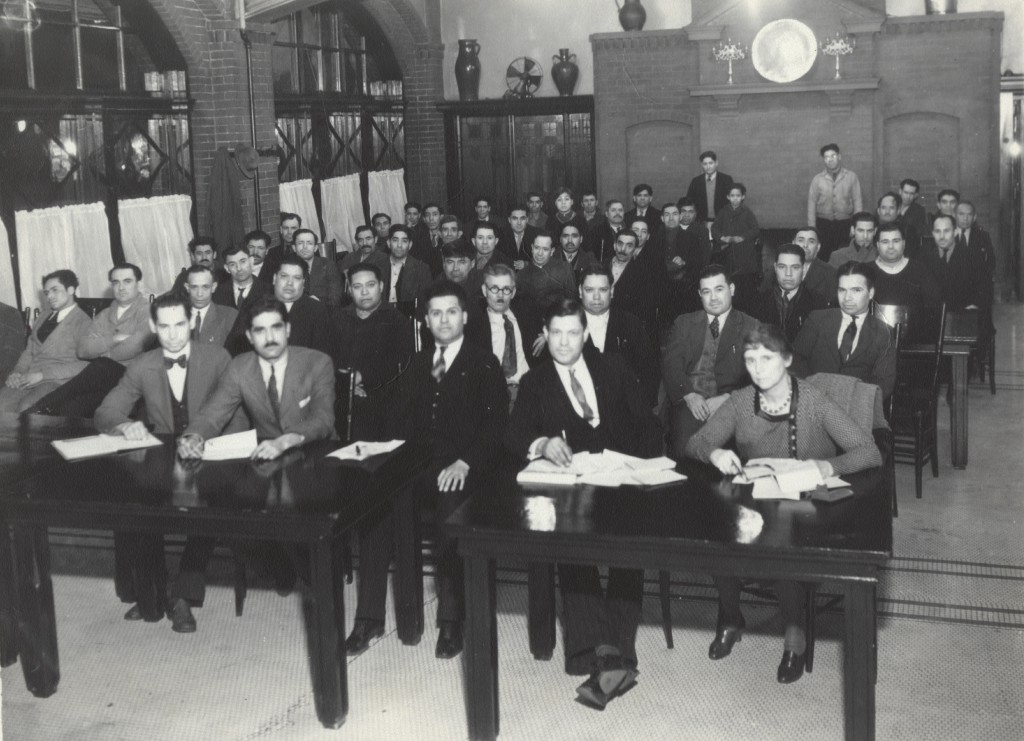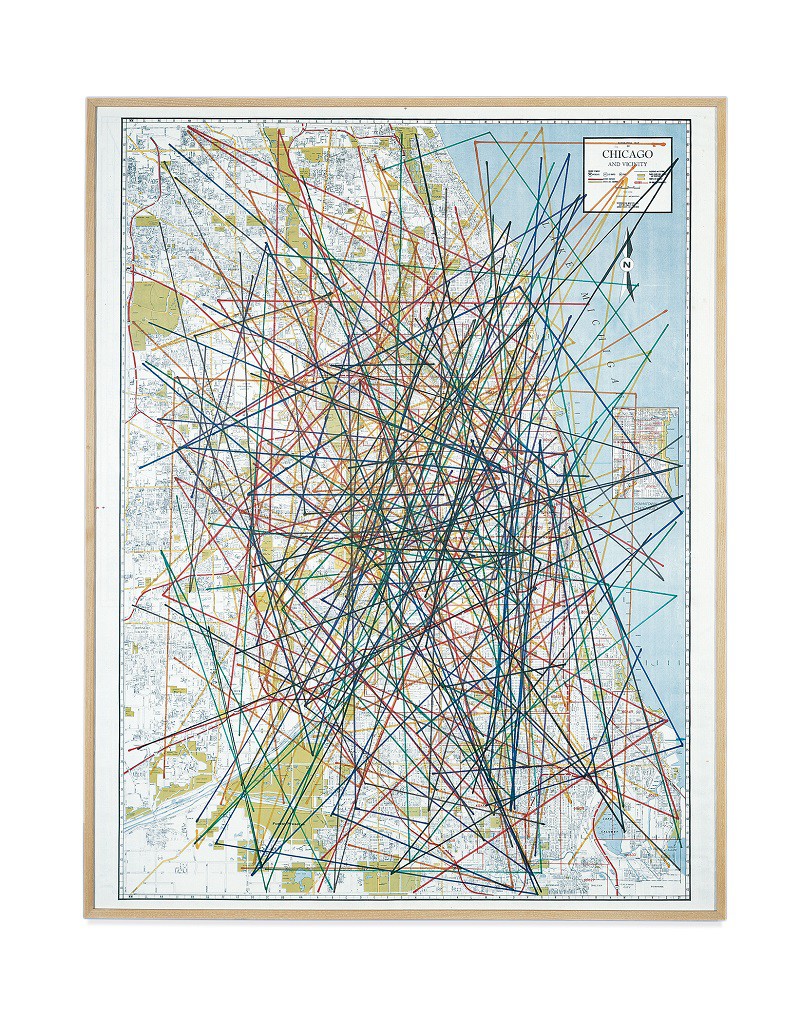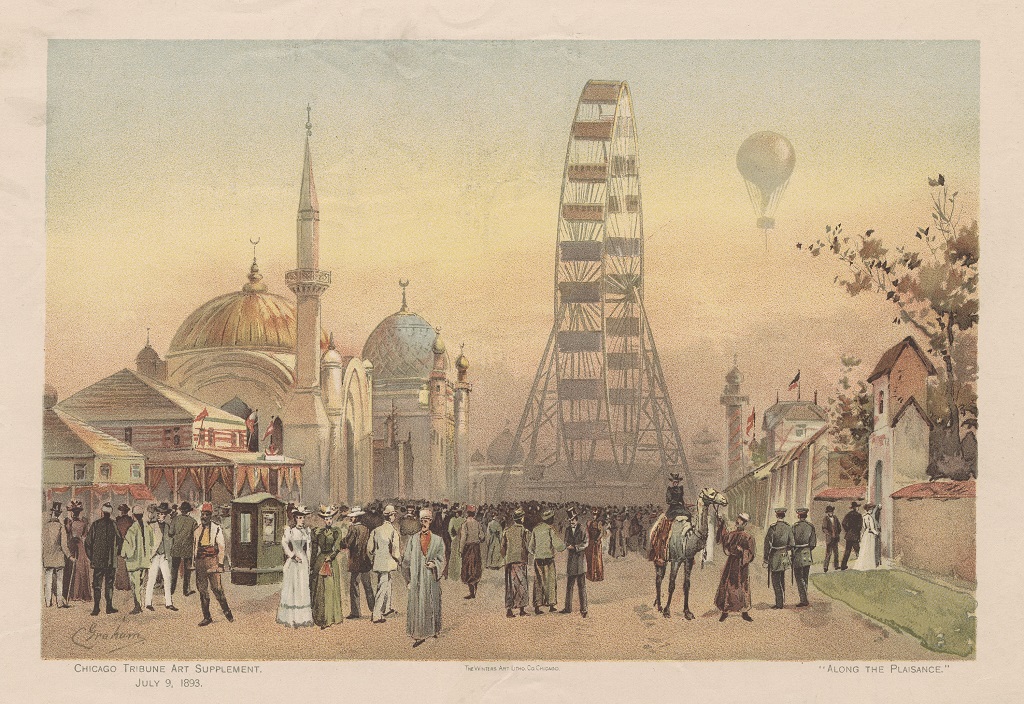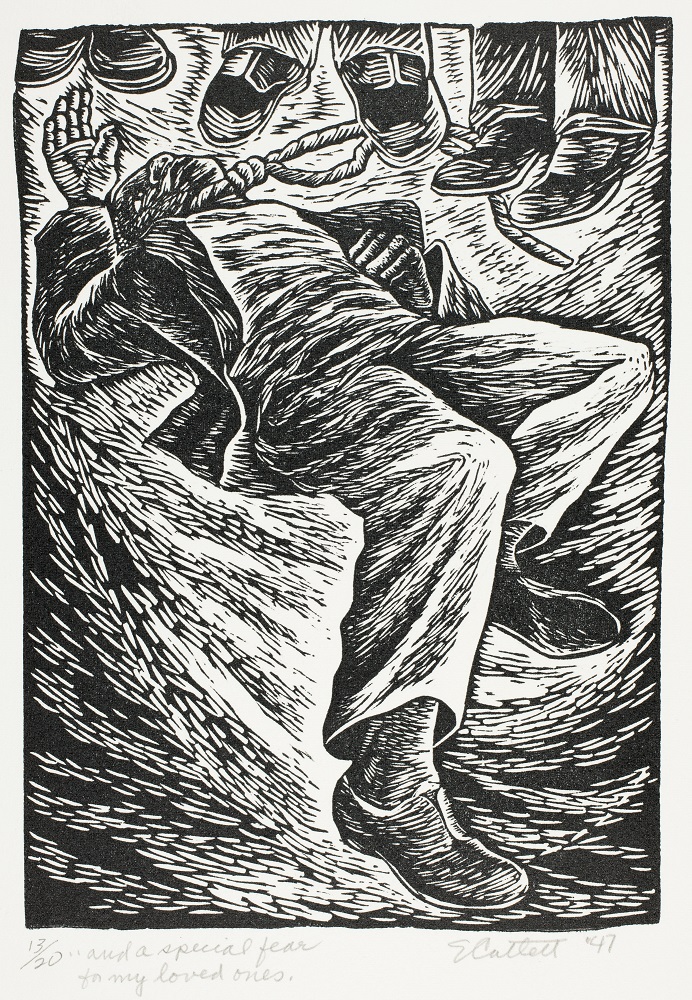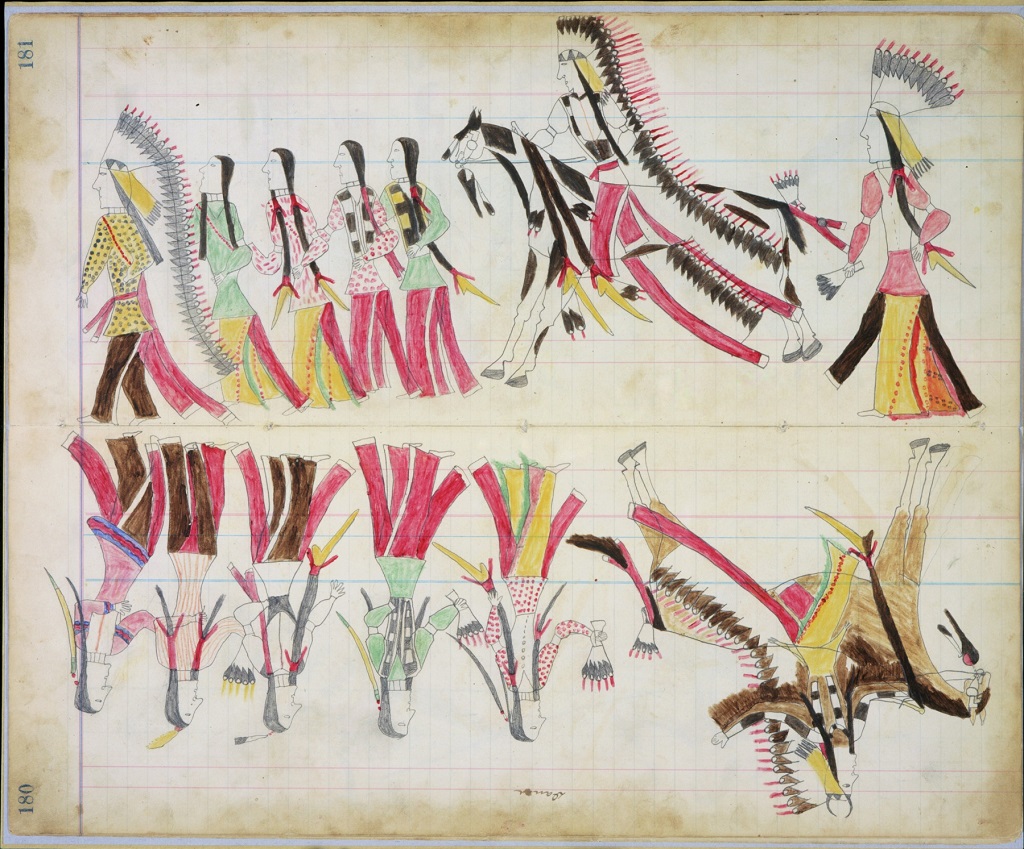Author:
The Jane Addams Hull-House Museum Staff
At First Glance
Where and when do you think this photograph was taken? What details suggest the place and date of the image? What is the relationship of the figures in the photograph to one another? Who might these people be? Why might they be gathered here?
Read to Build Knowledge
Wallace Kirkland’s photograph, which is captioned Hull House Coffee Shop, Class on Naturalization, Miss Binford presents an important moment in United States history. Well-dressed immigrants gather in a coffee shop at Chicago’s Hull-House Settlement, an institution that served as a community center when this photograph was taken. People are seated in rows at tables and face in the same direction. This looks like a class. The students are ready for instruction with papers and pens in hand, and a look of concentration on their faces. The woman sitting at the right is probably their teacher, Miss Binford. Otherwise, the group is composed almost entirely of men, with the exception of one woman and one young boy seated in the back of the room. The room is decorated, but has a practical feel about it.
Immigrants to the United States contributed to a major part of the industrialization of America in the late 1800s and early 1900s. The cheap labor of poor but aspiring immigrants laid the rails for trains, worked the furnaces in factories, and created a massive source of wealth for American business owners and leaders in these years. However, many people thought the newcomers were threatening American culture. They questioned whether immigrants could ever become true American citizens. This lead to the first immigration act passed by the government in 1906. The immigration exam required extensive study in order to pass the test and receive citizenship papers. In 1924, the strictest immigration act of the 20th century placed a limit on how many immigrants were allowed to enter the country. This greatly slowed down the massive flow of eastern and southern European immigrants that began in the 1880s, and people from Asia and Africa were essentially banned from the country. Mexicans, however, were the exception to these restrictions. They were allowed into the U. S. because Mexican laborers performed important manual work that many people in the country didn’t want to do. That meant that immigrants to the Chicago area were mostly Mexican in this time, as seems to be reflected in this photograph.
The Hull-House Settlement, founded in 1889 by Jane Addams, provided a community center for activities of all kinds, and it became a meeting ground for working-class immigrants and the wealthy, educated residents who lived at the settlement. Hull-House provided the first citizenship classes in the country to prepare immigrants for the difficult citizenship tests. Hull-House also offered English classes and job training skills to help neighbors adjust to Chicago’s work force and culture. The Immigrants’ Protective League, also located at Hull-House, was established in 1908 to defend immigrants against injustice in society and the workplace.
The teacher in this photograph, Jessie Binford, was a resident of Hull-House as well as the leader of the Juvenile Protective Association, which established the first juvenile court system in the country to protect children from mistreatment. This juvenile court system recognized that society is responsible for helping kids who need assistance and that the adult court system could not effectively help children.
Wallace Kirkland, the photographer of this image, lived and made his art at Hull-House. His many images of the Hull-House neighborhood and activities documented and provide insight into the immigrant experience in Chicago. Kirkland went on to photograph politicians, activists, and leaders of all kinds for Time magazine, but he always returned to the Hull-House neighborhood that shaped his career.
Analyze and Interpret
- What is your impression of this group of people? What do the context clues (clothes, body language, facial expressions) tell you about who they are?
- Why do you think Wallace Kirkland took this photograph? What do you think he wanted to communicate about this class?
- Why would an immigrant want to become a U. S. citizen?
For further reading (teachers)
Arredondo, Gabriella, Mexican Chicago: Race, Identity and Nation 1916-1939, 2008
Ganz, Cheryl R., and Margaret Strobel. Pots of Promise: Mexicans and Pottery at HullHouse, 19201940. Chicago: University of Illinois Press, 2004.
Jane Addams HullHouse Museum. “Urban Experience in Chicago: Hull-House and Its Neighborhoods, 1889-1963,” http://www.uic.edu/jaddams/hull/urbanexp/contents.htm
Eastwood, Carolyn. Near West Side Stories: Struggles for Community in Chicago’s Maxwell Street Neighborhood. Chicago: Lake Claremont Press, 2002.

